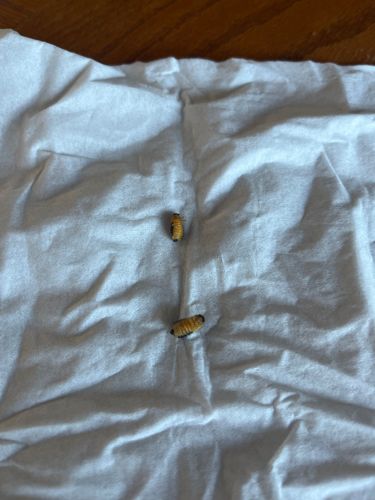Squash Vine Borer Larva
Scientific Name: Melittia cucurbitae
Order & Family: Lepidoptera, Sesiidae
Size: Larvae typically grow to about 2.5 cm (1 inch) in length.

Natural Habitat
Gardens and agricultural fields where squash, pumpkins, and other cucurbits are grown.
Diet & Feeding
The larvae feed internally on the stems of squash, pumpkin, gourds, and other cucurbit plants, chewing through the vascular tissue, which disrupts water and nutrient flow.
Behavior Patterns
The larvae are voracious feeders. After hatching, they typically feed on sap from plant stems for a few days, then burrow into the stem to feed internally and complete their development. They overwinter as larvae in plant debris or soil and pupate in the spring. Adults emerge in late spring to early summer.
Risks & Benefits
Potential Risk: Squash vine borer larvae are significant pests of squash, pumpkins, and gourds. Their feeding can cause wilting, stunted growth, and ultimately the death of the plant, leading to considerable crop loss for gardeners and farmers. There are no direct benefits of these larvae to humans or the ecosystem.
Identified on: 8/21/2025